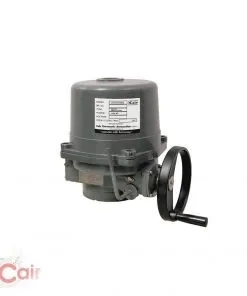Why Electric Actuators Are Driving Modern Industry
In today’s industrial landscape, the demand for precise, reliable, and energy-efficient automation solutions continues to grow. Among the key components enabling this transformation is the electric actuator—a powerful tool designed to convert electrical energy into mechanical motion. Whether used to open and close valves, operate dampers, or control positioning systems, electric actuators have become an essential part of industrial automation strategies. Their rising popularity stems from advantages like clean operation, high control accuracy, and seamless integration with digital systems.
For engineers, plant managers, and procurement decision-makers, understanding how electric actuators function—and how they compare to pneumatic or hydraulic alternatives—is critical to optimizing performance, cost, and system reliability.
Types of Electric Actuators
Electric actuators come in several configurations, each tailored for specific motion types and industrial applications. Here are the most common types:
1. Rotary Electric Actuators
Rotary actuators deliver angular motion, making them ideal for valve automation. They are commonly used with quarter-turn valves such as butterfly, ball, or plug valves. These actuators offer high torque and are often chosen for applications requiring frequent or continuous motion.
2. Linear Electric Actuators
These actuators convert electrical energy into straight-line motion. Used for sliding gates, dampers, or lifting mechanisms, linear actuators provide high positioning accuracy and are suitable for applications where tight control of displacement is required.
3. Multi-Turn Electric Actuators
For valves that require multiple turns to open or close—like globe or gate valves—multi-turn electric actuators are the go-to solution. Their robust design allows for precise control even under high loads.
Each of these actuator types supports varying load capacities, speeds, and duty cycles, making selection dependent on the specific requirements of your system.
Key Applications in Industrial Environments
Electric actuators are now standard in numerous sectors due to their versatility and reliability. Some of the primary industrial applications include:
- Water Treatment Plants: Controlling the flow of water, sludge, or chemicals through large-diameter valves.
- Oil & Gas: Operating pipeline valves in hazardous or remote areas where maintenance access is limited.
- HVAC Systems: Managing airflow through dampers for temperature regulation and energy efficiency.
- Food & Beverage: Actuating valves and conveyors in clean, washdown environments.
- Pharmaceutical & Chemical Processing: Offering contamination-free operation and precise dosage control.
The electric actuator is especially valuable in applications requiring feedback integration, remote control, or where pneumatic systems are impractical due to space or environmental concerns.
Performance Benefits That Set Electric Actuators Apart
Electric actuators offer numerous performance advantages that justify their growing adoption:
1. Precision and Control
Unlike pneumatic actuators, which rely on air pressure fluctuations, electric actuators provide accurate position control with minimal drift, supporting automation in sensitive processes.
2. Energy Efficiency
Electric actuators consume power only when operating, unlike pneumatic systems that continuously use compressed air. This translates to significant energy savings in long-term operations.
3. Clean Operation
No risk of air or fluid leaks means electric actuators are ideal for cleanroom and hygienic applications.
4. Low Maintenance
With fewer moving parts and no fluid systems to monitor, electric actuators often require less maintenance than hydraulic or pneumatic counterparts.
5. Integration with Smart Systems
Electric actuators easily integrate with PLCs, SCADA, and industrial IoT systems. Their compatibility with digital feedback systems supports remote monitoring, diagnostics, and predictive maintenance strategies.
Choosing the Right Electric Actuator
When selecting an electric actuator, it’s important to consider:
- Load requirements
- Motion type (rotary or linear)
- Speed and travel limits
- Duty cycle
- Control interface needs (analog, digital, or fieldbus protocols)
Partnering with a trusted manufacturer ensures your actuator performs as expected under real-world industrial conditions. For example, Cair Euro offers a range of electric actuators engineered for precision, durability, and integration ease—making them a reliable choice for demanding industrial automation systems.
Conclusion: Powering the Future of Industrial Automation
As industries continue to embrace digital transformation and sustainability, electric actuators offer a clear advantage. Their combination of energy efficiency, intelligent control, and minimal maintenance makes them a future-proof investment across various sectors. Whether you're upgrading aging systems or designing new processes, the right electric actuator can significantly improve operational efficiency, safety, and control precision.
For professionals seeking robust automation solutions, electric actuators are no longer optional—they’re essential.



